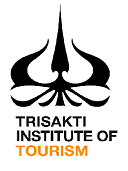Dark Tourism Opportunities and Challenges: A case study from Lapindo Mud Disaster
Abstract
The purpose of this article is to analyze the opportunities and challenges of the potential dark tourism of Lapindo Mud, as well as to find out the practice of Lapindo Mud dark tourism because of the many irregularities that the authors found when conducting research. The methodology used is a qualitative method with a case study approach. In-depth interviews with Lapindo mud victims, the Lapindo Mud Control Center observation, and documentation. The Opportunity of Lapindo Mud dark tourism is the tourist motivation for visiting Lapindo Mud is not to admire the natural beauty and take a vacation, but there is a spiritual and sympathetic sense of tourists interspersed with pain and even anger towards tragic stories caused by nature or human crimes to be unique. Some facts make challenges for this dark tourism; namely, management is carried out spontaneously or without planning. The focus of this study is indeed narrow, but the findings provide theoretical and practical insights into the conceptualization of dark tourism by analyzing opportunities and challenges related to the potential of dark tourism in Lapindo Mud. Thus, the understanding of this phenomenon can be improved and can be used to add knowledge and reference material for further research.
Keywords: Dark Tourism, Lapindo Mud, Tourist Motivation, Opportunities, Challenges










